The Other Face of God: ‘I Am That I Am’ Reconsidered
Published: Feb 2012
£75.00
'I am that I am' (Exodus 3.14) has been an exegetical puzzle to many generations of biblical scholars as well as theologians: is it about the present or the future, is it about God's presence or his hiddenness? Den Hertog argues that such exegetical questions have been framed too narrowly, and that this deeply suggestive statement about God needs to be set in a broader context.
Firstly, the statement must be understood within the narrative of Moses's call as an answer to his problem: how can his being launched on a radically new, prophetic mission be reconciled with the features of the God of the patriarchs? This book
substantiates the view that the meaning of the statement is deliberately indefinite: 'I may be who I may be'. In its context, it points to Yhwh’s other face, the possibility of his manifesting himself differently from the way he is thought to be.
Secondly, the after-history of this text should also be considered, since it has shaped our understanding in one way or another. This book pays particular attention to the renderings by the ancient and early modern versions (including the King James Version). The point of departure is the Septuagint rendering 'I am the one being', which has traditionally been associated with the Greek philosophical concept of absolute Being. This rendering, however, appears to have originally signified God's active presence: 'I am the one who shows himself to be there'.
Thirdly, this fundamental theological statement invites further a psychoanalytic interpretation. Den Hertog adopts a Lacanian perspective, according to which 'I am that I am' represents an irruption of an 'I' from nowhere, from beyond usual thought and expectation. In its context this means that in a situation of crisis a new orientation is born, one that undermines the pharaonic powers.
The Other Face of God: ‘I Am That I Am’ Reconsidered
£75.00
'I am that I am' (Exodus 3.14) has been an exegetical puzzle to many generations of biblical scholars as well as theologians: is it about the present or the future, is it about God's presence or his hiddenness? Den Hertog argues that such exegetical questions have been framed too narrowly, and that this deeply suggestive statement about God needs to be set in a broader context.
Firstly, the statement must be understood within the narrative of Moses's call as an answer to his problem: how can his being launched on a radically new, prophetic mission be reconciled with the features of the God of the patriarchs? This book
substantiates the view that the meaning of the statement is deliberately indefinite: 'I may be who I may be'. In its context, it points to Yhwh’s other face, the possibility of his manifesting himself differently from the way he is thought to be.
Secondly, the after-history of this text should also be considered, since it has shaped our understanding in one way or another. This book pays particular attention to the renderings by the ancient and early modern versions (including the King James Version). The point of departure is the Septuagint rendering 'I am the one being', which has traditionally been associated with the Greek philosophical concept of absolute Being. This rendering, however, appears to have originally signified God's active presence: 'I am the one who shows himself to be there'.
Thirdly, this fundamental theological statement invites further a psychoanalytic interpretation. Den Hertog adopts a Lacanian perspective, according to which 'I am that I am' represents an irruption of an 'I' from nowhere, from beyond usual thought and expectation. In its context this means that in a situation of crisis a new orientation is born, one that undermines the pharaonic powers.
Joseph and Aseneth: A Christian Book
Published: Feb 2012
£55.00
Joseph and Aseneth , a book of the Old Testament Pseudepigrapha, is a love story about the biblical Joseph and his Egyptian wife Aseneth which, in richly symbolic language, tells how the idol worshipper Aseneth was converted to belief in the one God. In recent decades, it has featured prominently in discussions of Second Temple Judaism as a testimony to a Hellenistic diaspora Judaism that neither observed the rules of conversion to Judaism ( giyyur ) nor cared much for the laws of the Torah. Rivka Nir offers a completely different understanding. Joseph and Aseneth , she argues, teaches us nothing about Second Temple Judaism. Rather, its vocabulary, ideas, symbols and structure become fully comprehensible only when viewed against the background of Syriac Christianity of the third and fourth century. In this setting, Aseneth and Joseph are symbolic and typological images: Aseneth symbolizes the church, Joseph is a prototype of Christ, and their marriage is a symbolic representation of the eternal marriage between Christ and the church. Aseneth's religious transformation should be understood as conversion to Christianity, an example for polytheists to follow. Turning our attention to the central role virginity plays in the story, Nir addresses the problematic scene of the honeycomb and the bees, reading it as a call to those joining the church to take a vow of virginity and resolve to lead a life of sexual abstinence. Through Nir's detailed analysis of the symbols and metaphors of Joseph and Aseneth in a Christian context, the book coalesces into a tightly integrated and meaningful whole, on both the theological and the symbolic levels.
Joseph and Aseneth: A Christian Book
£55.00
Joseph and Aseneth , a book of the Old Testament Pseudepigrapha, is a love story about the biblical Joseph and his Egyptian wife Aseneth which, in richly symbolic language, tells how the idol worshipper Aseneth was converted to belief in the one God. In recent decades, it has featured prominently in discussions of Second Temple Judaism as a testimony to a Hellenistic diaspora Judaism that neither observed the rules of conversion to Judaism ( giyyur ) nor cared much for the laws of the Torah. Rivka Nir offers a completely different understanding. Joseph and Aseneth , she argues, teaches us nothing about Second Temple Judaism. Rather, its vocabulary, ideas, symbols and structure become fully comprehensible only when viewed against the background of Syriac Christianity of the third and fourth century. In this setting, Aseneth and Joseph are symbolic and typological images: Aseneth symbolizes the church, Joseph is a prototype of Christ, and their marriage is a symbolic representation of the eternal marriage between Christ and the church. Aseneth's religious transformation should be understood as conversion to Christianity, an example for polytheists to follow. Turning our attention to the central role virginity plays in the story, Nir addresses the problematic scene of the honeycomb and the bees, reading it as a call to those joining the church to take a vow of virginity and resolve to lead a life of sexual abstinence. Through Nir's detailed analysis of the symbols and metaphors of Joseph and Aseneth in a Christian context, the book coalesces into a tightly integrated and meaningful whole, on both the theological and the symbolic levels.
Preposterous Revelations: Visions of Apocalypse and Martyrdom in Hollywood Cinema 1980-2000
Published: Jan 2012
£21.00
This is an ambitious attempt to produce an interdisciplinary reading of a set of relatively recent Hollywood films that appear to make references to the biblical genre of apocalyptic and associated ideas of Christian martyrdom and eschatology: End of Days , Armageddon , Alien3 , The Rapture , The Seventh Sign . It is a 'preposterous' reading (Mieke Bal's term), reversing a common-sense impulse to view what comes first chronologically (the biblical text) as an unproblematic template rather than as itself the consequence of subsequent, contextualized readings. The cinematic reworkings Copier describes shift our understanding of both texts (biblical and cinematic) and genre. Within this process, the apocalyptic subject —the martyr —adopts variable poses that reflect the effects of this disorienting reversal: across the five films analysed, the martyr moves from identifiably Christian motivations to the representation of patriotic American masculinity, or even to something that, in a contrary sense, powerfully challenges the conventional masculinity of any martyrdom that counts as significant. To achieve a genuine interdisciplinarity, Copier not only avoids reading each film as if it were simply the visual counterpart to a (biblical) narrative, but also analyses in the case of each film what the 'shot list' of a key sequence reveals about the semiotics at work within its construction. Unlike most encounters between religion and film, her film analysis goes far beyond the identification of themes and motifs. Here the author engages with the larger field of film studies, and especially with film as a visual medium.
Preposterous Revelations: Visions of Apocalypse and Martyrdom in Hollywood Cinema 1980-2000
£21.00
This is an ambitious attempt to produce an interdisciplinary reading of a set of relatively recent Hollywood films that appear to make references to the biblical genre of apocalyptic and associated ideas of Christian martyrdom and eschatology: End of Days , Armageddon , Alien3 , The Rapture , The Seventh Sign . It is a 'preposterous' reading (Mieke Bal's term), reversing a common-sense impulse to view what comes first chronologically (the biblical text) as an unproblematic template rather than as itself the consequence of subsequent, contextualized readings. The cinematic reworkings Copier describes shift our understanding of both texts (biblical and cinematic) and genre. Within this process, the apocalyptic subject —the martyr —adopts variable poses that reflect the effects of this disorienting reversal: across the five films analysed, the martyr moves from identifiably Christian motivations to the representation of patriotic American masculinity, or even to something that, in a contrary sense, powerfully challenges the conventional masculinity of any martyrdom that counts as significant. To achieve a genuine interdisciplinarity, Copier not only avoids reading each film as if it were simply the visual counterpart to a (biblical) narrative, but also analyses in the case of each film what the 'shot list' of a key sequence reveals about the semiotics at work within its construction. Unlike most encounters between religion and film, her film analysis goes far beyond the identification of themes and motifs. Here the author engages with the larger field of film studies, and especially with film as a visual medium.
The Dictionary of Classical Hebrew: Volumes 1-9 paperback
Published: Nov 2011
£445.00
The Dictionary of Classical Hebrew is a completely new and innovative dictionary.
Unlike previous dictionaries, which have been dictionaries of biblical Hebrew, this is the first dictionary of the classical Hebrew language to include, as well as the biblical texts, Ben Sira, the Dead Sea Scrolls, and all the other known Hebrew inscriptions and manuscripts.
This Dictionary covers the period from the earliest times to 200 CE. It lists and analyses every occurrence of each Hebrew word that occurs in texts of that period, with an English translation of every Hebrew word and phrase cited. Among its special features are: a list of the non-biblical texts cited (especially the Dead Sea Scrolls), a word frequency index for each letter of the alphabet, a substantial bibliography and an English–Hebrew index in each volume.
The paperback edition contains exactly the same pages as the hardback, and is priced at less than half the hardback price.
Please use this page for ordering the complete set of 9 paperback vols., originally published between 1993 and 2016.
The Dictionary of Classical Hebrew: Volumes 1-9 paperback
£445.00
The Dictionary of Classical Hebrew is a completely new and innovative dictionary.
Unlike previous dictionaries, which have been dictionaries of biblical Hebrew, this is the first dictionary of the classical Hebrew language to include, as well as the biblical texts, Ben Sira, the Dead Sea Scrolls, and all the other known Hebrew inscriptions and manuscripts.
This Dictionary covers the period from the earliest times to 200 CE. It lists and analyses every occurrence of each Hebrew word that occurs in texts of that period, with an English translation of every Hebrew word and phrase cited. Among its special features are: a list of the non-biblical texts cited (especially the Dead Sea Scrolls), a word frequency index for each letter of the alphabet, a substantial bibliography and an English–Hebrew index in each volume.
The paperback edition contains exactly the same pages as the hardback, and is priced at less than half the hardback price.
Please use this page for ordering the complete set of 9 paperback vols., originally published between 1993 and 2016.
A Critical Engagement: Essays on the Hebrew Bible in Honour of J. Cheryl Exum
Published: Nov 2011
£75.00
This volume honours the distinctive contribution to Hebrew Bible studies over four decades by Cheryl Exum, Professor Emerita of Biblical Studies in the University of Sheffield. Her special interests have lain, first, in the modern literary criticism of the Hebrew Bible, where her key work was Tragedy and Biblical Narrative: Arrows of the Almighty . A second area has been feminist criticism of the Hebrew Bible; here her notable contributions were Fragmented Women: Feminist (Sub)versions of Biblical Narratives and Plotted, Shot, and Painted: Cultural Representations of Biblical Women . A more recent, and now almost favourite, theme is the Bible and cultural studies, especially the Bible and art. Key works here have been a series of edited volumes, such as Beyond the Biblical Horizon: The Bible and the Arts , and The Bible in Film / The Bible and Film . Her fourth area of continuing interest has been the Song of Songs, with many articles culminating in her perceptive commentary in the Old Testament Library series. In this rich volume, 25 of her friends and colleagues offer her papers on all these themes. Several are on or around the Song of Songs (Graeme Auld, Fiona Black, David Clines, Sara Japhet, Martti Nissinen, Yair Zakovitch), and topics of feminist interest (Yairah Amit, Athalya Brenner, Claudia Camp, Hugh Pyper, Jack Sasson). Cultural studies are represented by Alice Bach, Hans Barstad, Andrew Davies, David Gunn, Martin O'Kane, John Sawyer and Ellen van Wolde, and literary criticism by Michael Fox, Edwin Good, Norman Gottwald, Edward Greenstein, Francis Landy, Burke Long and Hugh Williamson.
A Critical Engagement: Essays on the Hebrew Bible in Honour of J. Cheryl Exum
£75.00
This volume honours the distinctive contribution to Hebrew Bible studies over four decades by Cheryl Exum, Professor Emerita of Biblical Studies in the University of Sheffield. Her special interests have lain, first, in the modern literary criticism of the Hebrew Bible, where her key work was Tragedy and Biblical Narrative: Arrows of the Almighty . A second area has been feminist criticism of the Hebrew Bible; here her notable contributions were Fragmented Women: Feminist (Sub)versions of Biblical Narratives and Plotted, Shot, and Painted: Cultural Representations of Biblical Women . A more recent, and now almost favourite, theme is the Bible and cultural studies, especially the Bible and art. Key works here have been a series of edited volumes, such as Beyond the Biblical Horizon: The Bible and the Arts , and The Bible in Film / The Bible and Film . Her fourth area of continuing interest has been the Song of Songs, with many articles culminating in her perceptive commentary in the Old Testament Library series. In this rich volume, 25 of her friends and colleagues offer her papers on all these themes. Several are on or around the Song of Songs (Graeme Auld, Fiona Black, David Clines, Sara Japhet, Martti Nissinen, Yair Zakovitch), and topics of feminist interest (Yairah Amit, Athalya Brenner, Claudia Camp, Hugh Pyper, Jack Sasson). Cultural studies are represented by Alice Bach, Hans Barstad, Andrew Davies, David Gunn, Martin O'Kane, John Sawyer and Ellen van Wolde, and literary criticism by Michael Fox, Edwin Good, Norman Gottwald, Edward Greenstein, Francis Landy, Burke Long and Hugh Williamson.
Reconfiguring Mark’s Jesus: Narrative Criticism After Poststructuralism
Published: Oct 2011
£60.00
As readers, we are captivated by the resemblance of literary characters to actual persons. But it is precisely this illusion that allows characterization to play host to dominant ideologies of both 'literature' and 'the self'. This is especially true when we confuse narrative figures and historical persons.
Over the last thirty years, New Testament narrative criticism has developed into a major methodological approach in Biblical Studies. But for all its ingenuity and promise, it has been reluctant to let go of conventional historical-critical moorings. As a result, one is hard pressed to find any substantive difference between reconstructions of the historical Jesus and narrative-critical readings of the character Jesus.
Reconfiguring Mark's Jesus endeavors to reorient and advance narrative criticism by analysing the Gospel of Mark's characterization of the figure of Jesus in relation to three other fundamental aspects of narrative discourse: focalization, dialogue, and plot. This intertextual reading, in which Mark is set alongside two ancient novels — Leucippe and Clitophon and the Life of Aesop —problematizes implicitly modern notions of literary characters as autonomous 'agents', as well as 'naturalizing' treatments of literary characters as historical referents. Highlighting the inherent ambiguity of narrative discourse, particularly with regard to referentiality, human agency, and the complex relationship between literature and history, Reconfiguring Mark's Jesus illustrates the diverse and complex ways that narratives, of necessity, produce fragmented characters that refract the inherent paradoxes of narrative itself and of human subjectivity.
Reconfiguring Mark’s Jesus: Narrative Criticism After Poststructuralism
£60.00
As readers, we are captivated by the resemblance of literary characters to actual persons. But it is precisely this illusion that allows characterization to play host to dominant ideologies of both 'literature' and 'the self'. This is especially true when we confuse narrative figures and historical persons.
Over the last thirty years, New Testament narrative criticism has developed into a major methodological approach in Biblical Studies. But for all its ingenuity and promise, it has been reluctant to let go of conventional historical-critical moorings. As a result, one is hard pressed to find any substantive difference between reconstructions of the historical Jesus and narrative-critical readings of the character Jesus.
Reconfiguring Mark's Jesus endeavors to reorient and advance narrative criticism by analysing the Gospel of Mark's characterization of the figure of Jesus in relation to three other fundamental aspects of narrative discourse: focalization, dialogue, and plot. This intertextual reading, in which Mark is set alongside two ancient novels — Leucippe and Clitophon and the Life of Aesop —problematizes implicitly modern notions of literary characters as autonomous 'agents', as well as 'naturalizing' treatments of literary characters as historical referents. Highlighting the inherent ambiguity of narrative discourse, particularly with regard to referentiality, human agency, and the complex relationship between literature and history, Reconfiguring Mark's Jesus illustrates the diverse and complex ways that narratives, of necessity, produce fragmented characters that refract the inherent paradoxes of narrative itself and of human subjectivity.
Emotions in Biblical Law: A Cognitive Science Approach
Published: Oct 2011
£50.00
This study pioneers the use of insights from cognitive sciences, such as evolutionary biology, neuroscience, and developmental psychology, as heuristic tools for interpreting ancient texts. The approach could be described as 'psycho-biological'. The focus is on emotions in the various Pentateuchal legal collections. Kazen discusses the role of disgust, empathy, fear, and a sense of justice, for particular moral and ritual issues: purity and holiness; humanitarian concern for vulnerable categories; ethnocentrism and xenophobia; divine punishment and demonic threat; revenge, compensation, and ransom (kofer), together with removal (kipper) rites.
The book consists of two main parts, framed by an introductory chapter and a concluding discussion. In the first part, Kazen explores cognitive foundations, including biological and neuroscientific underpinnings for basic affects, and the role of culture in shaping both conventional morality and ritual behaviour. Four particular emotions are then outlined. In the second part, these insights from cognitive science are applied in analyses of particular texts. After an overview of the Pentateuchal legal collections, each of the four emotions is dealt with in a separate chapter. Kazen constantly relates a cognitive science approach to more traditional source and redaction-critical analysis, regarding them as complementary.
As a result, the Pentateuchal legal collections are seen as emotional texts, expressing strong affects —which influences our understanding of the character of Israelite 'law'. Kazen suggests that interaction and conflict between various emotions can explain discrepancies and tensions between humanitarian concerns and ethnocentrism, and between empathy and justice. He also demonstrates that viewing emotions as common denominators contains a potential for solving some difficult and long-standing conundrums. He argues that a focus on the human embodied experience rather than on theological convictions and theoretical ideas may avoid some interpretative dead ends and open up new avenues for understanding ancient texts.
Emotions in Biblical Law: A Cognitive Science Approach
£50.00
This study pioneers the use of insights from cognitive sciences, such as evolutionary biology, neuroscience, and developmental psychology, as heuristic tools for interpreting ancient texts. The approach could be described as 'psycho-biological'. The focus is on emotions in the various Pentateuchal legal collections. Kazen discusses the role of disgust, empathy, fear, and a sense of justice, for particular moral and ritual issues: purity and holiness; humanitarian concern for vulnerable categories; ethnocentrism and xenophobia; divine punishment and demonic threat; revenge, compensation, and ransom (kofer), together with removal (kipper) rites.
The book consists of two main parts, framed by an introductory chapter and a concluding discussion. In the first part, Kazen explores cognitive foundations, including biological and neuroscientific underpinnings for basic affects, and the role of culture in shaping both conventional morality and ritual behaviour. Four particular emotions are then outlined. In the second part, these insights from cognitive science are applied in analyses of particular texts. After an overview of the Pentateuchal legal collections, each of the four emotions is dealt with in a separate chapter. Kazen constantly relates a cognitive science approach to more traditional source and redaction-critical analysis, regarding them as complementary.
As a result, the Pentateuchal legal collections are seen as emotional texts, expressing strong affects —which influences our understanding of the character of Israelite 'law'. Kazen suggests that interaction and conflict between various emotions can explain discrepancies and tensions between humanitarian concerns and ethnocentrism, and between empathy and justice. He also demonstrates that viewing emotions as common denominators contains a potential for solving some difficult and long-standing conundrums. He argues that a focus on the human embodied experience rather than on theological convictions and theoretical ideas may avoid some interpretative dead ends and open up new avenues for understanding ancient texts.
Jerusalem and the Nations: Studies in the Book of Isaiah
Published: Sep 2011
£50.00
This volume contains the fruit of three decades of Ronald Clements's researches on prophecy in the Old Testament. In sixteen papers, seven of them not previously published, he broaches several leading questions about the origins of written prophecy in the Old Testament. A major focus is on the impact of the events of 701 BCE on the formation of the Isaiah book as a whole and the rise of Jerusalem as a centre of religious hope.
Further studies deal with the role of the Isaiah book in current biblical interpretation and the failure of twentieth-century interpreters to explain its unity. Other subjects concern ideas of divine providence, theodicy, and the links between ancient scribal methods of book formation and canonical authority. Special attention is given to the attempts to retain traditional Christian approaches to a book, the interpretation of which has been greatly transformed by modern critical study.
Jerusalem and the Nations: Studies in the Book of Isaiah
£50.00
This volume contains the fruit of three decades of Ronald Clements's researches on prophecy in the Old Testament. In sixteen papers, seven of them not previously published, he broaches several leading questions about the origins of written prophecy in the Old Testament. A major focus is on the impact of the events of 701 BCE on the formation of the Isaiah book as a whole and the rise of Jerusalem as a centre of religious hope.
Further studies deal with the role of the Isaiah book in current biblical interpretation and the failure of twentieth-century interpreters to explain its unity. Other subjects concern ideas of divine providence, theodicy, and the links between ancient scribal methods of book formation and canonical authority. Special attention is given to the attempts to retain traditional Christian approaches to a book, the interpretation of which has been greatly transformed by modern critical study.
Bible, Art, Gallery
Published: Sep 2011
£50.00
While Old Masters' paintings of biblical scenes held by major galleries in many countries are visited and seen by thousands, gems of biblical art in smaller, provincial galleries seldom get the recognition and attention they deserve. Over two years, assisted by funding from the British Academy, conferences were held at the Barber Institute of Fine Arts, University of Birmingham, and at the Manchester Art Gallery, highlighting some of the significant biblical paintings held in the collections of both galleries. The papers presented at these conferences, drawn from the worlds of biblical studies, art history, philosophy, sociology and music, and collected in this volume, reflect the interdisciplinary goals of the project. These essays serve not only to showcase biblical paintings by lesser known artists but also to illustrate the wide range of perspectives and insights brought by the different academic disciplines.
Bible, Art, Gallery
£50.00
While Old Masters' paintings of biblical scenes held by major galleries in many countries are visited and seen by thousands, gems of biblical art in smaller, provincial galleries seldom get the recognition and attention they deserve. Over two years, assisted by funding from the British Academy, conferences were held at the Barber Institute of Fine Arts, University of Birmingham, and at the Manchester Art Gallery, highlighting some of the significant biblical paintings held in the collections of both galleries. The papers presented at these conferences, drawn from the worlds of biblical studies, art history, philosophy, sociology and music, and collected in this volume, reflect the interdisciplinary goals of the project. These essays serve not only to showcase biblical paintings by lesser known artists but also to illustrate the wide range of perspectives and insights brought by the different academic disciplines.
Korean Feminists in Conversation with the Bible, Church and Society
Published: Sep 2011
£50.00
This book offers scholars and students outside Korea some insight into what forms feminist biblical interpretation takes in Korea and what approaches Korean feminists adopt for dealing with the Bible in their writing and their professional lives.
The contributors to this book represent a wide spectrum of the Korean feminist Christian movement. They include university and seminary teachers, ministers, and field workers. This book is a product of their numerous meetings and discussions on the practical issues that define contemporary Korean women's lives. In it, the contributors reflect on the diverse situations modern Korean women have faced and continue to struggle with, among them, the traditional religious culture based on Confucianism, economic globalization, postcolonialism, the problems of migrant women labourers, and the trauma of being forced into sexual slavery for Japanese soldiers during World War II. They view these situations in the light of the lives and experiences of women in the Old and New Testaments, and they look to the Bible for resources for dealing with them.
This is socially engaged biblical interpretation. It goes beyond the academic study of the Bible to a wider engagement with the church and with Korean society.
The volume is published in cooperation with Ewha Institute for Women's Theological Studies.
Korean Feminists in Conversation with the Bible, Church and Society
£50.00
This book offers scholars and students outside Korea some insight into what forms feminist biblical interpretation takes in Korea and what approaches Korean feminists adopt for dealing with the Bible in their writing and their professional lives.
The contributors to this book represent a wide spectrum of the Korean feminist Christian movement. They include university and seminary teachers, ministers, and field workers. This book is a product of their numerous meetings and discussions on the practical issues that define contemporary Korean women's lives. In it, the contributors reflect on the diverse situations modern Korean women have faced and continue to struggle with, among them, the traditional religious culture based on Confucianism, economic globalization, postcolonialism, the problems of migrant women labourers, and the trauma of being forced into sexual slavery for Japanese soldiers during World War II. They view these situations in the light of the lives and experiences of women in the Old and New Testaments, and they look to the Bible for resources for dealing with them.
This is socially engaged biblical interpretation. It goes beyond the academic study of the Bible to a wider engagement with the church and with Korean society.
The volume is published in cooperation with Ewha Institute for Women's Theological Studies.
The Letter to the Romans: Salvation as Justice and the Deconstruction of Law
Published: Sep 2011
£70.00
Romans, says Waetjen, is the first publication of the Christ movement. To understand it well is therefore a task of monumental importance, and to understand it today requires a postmodern hermeneutics, in which the interpreter's subjective experience of reading the text is correlated with historical-critical knowledge and social-scientific criticism. That hermeneutics has to create a new genre of commentary, making room for readers' prior understandings as well as for a dynamic form of close reading and consistency building. The outcome is a contemporizing of Paul's theology that induces conversation with Derrida, Žižek, Badiou and Agamben and others.
The central theme of Romans is, according to Waetjen, the healing of humanity through the realization of 'the justice of God', which is disclosed in the movement 'out of trust into trust', or, more specifically, out of the trust of Abraham into the trust of Jesus Christ. Living on this side of the law of Sinai and therefore being conscious of the condition of sin requires the reconciliation of Christ's death and the justification of Christ's resurrection in order to participate in the New Humanity of life-giving spirits.
Consequently Romans is more than a rhetorical effort to mediate conflicts between Jewish and Gentile believers in Rome. Composed prior to his journey to Jerusalem with the possibility of martyrdom before him, the letter is Paul's major theological testament.
The Letter to the Romans: Salvation as Justice and the Deconstruction of Law
£70.00
Romans, says Waetjen, is the first publication of the Christ movement. To understand it well is therefore a task of monumental importance, and to understand it today requires a postmodern hermeneutics, in which the interpreter's subjective experience of reading the text is correlated with historical-critical knowledge and social-scientific criticism. That hermeneutics has to create a new genre of commentary, making room for readers' prior understandings as well as for a dynamic form of close reading and consistency building. The outcome is a contemporizing of Paul's theology that induces conversation with Derrida, Žižek, Badiou and Agamben and others.
The central theme of Romans is, according to Waetjen, the healing of humanity through the realization of 'the justice of God', which is disclosed in the movement 'out of trust into trust', or, more specifically, out of the trust of Abraham into the trust of Jesus Christ. Living on this side of the law of Sinai and therefore being conscious of the condition of sin requires the reconciliation of Christ's death and the justification of Christ's resurrection in order to participate in the New Humanity of life-giving spirits.
Consequently Romans is more than a rhetorical effort to mediate conflicts between Jewish and Gentile believers in Rome. Composed prior to his journey to Jerusalem with the possibility of martyrdom before him, the letter is Paul's major theological testament.
Reading Ideologies: Essays on the Bible and Interpretation in Honor of Mary Ann Tolbert
Published: Sep 2011
£75.00
Mary Ann Tolbert has been a pioneering voice in what we have now come to call 'interdisciplinary reading' of the Bible. In the early stages of her career, Tolbert used New Testament parables to push biblical scholarship beyond the traditional confines of historical-critical methods. Over the past four decades, she has made significant contributions to psychoanalytical, narrative, rhetorical, feminist, and queer readings of the Bible, and has interrogated the social location of biblical interpreters as well as the ideological implications of reading and reading methodologies.
Divided into three main sections, this collection of essays from biblical scholars around the world to honor Tolbert engage the very issues that have driven and defined Tolbert's scholarship: reading between the historical and the literary; reading between biblical authority and social location; and reading between gender and sexuality. The title of the collection focuses on an often-used but arguably under-examined term in biblical studies: 'ideology'. Together, essays in this volume not only perform ideological criticism of the Bible but also profess the ideological nature of criticism itself, since —regardless of 'what' and 'how' one is reading —the act of reading is always already infused with ideology. By highlighting the work of ideology in interpretation, this volume ultimately suggests that while ideology impacts interpretation of meaning, the meaning of ideology itself also needs to be interpreted.
Reading Ideologies: Essays on the Bible and Interpretation in Honor of Mary Ann Tolbert
£75.00
Mary Ann Tolbert has been a pioneering voice in what we have now come to call 'interdisciplinary reading' of the Bible. In the early stages of her career, Tolbert used New Testament parables to push biblical scholarship beyond the traditional confines of historical-critical methods. Over the past four decades, she has made significant contributions to psychoanalytical, narrative, rhetorical, feminist, and queer readings of the Bible, and has interrogated the social location of biblical interpreters as well as the ideological implications of reading and reading methodologies.
Divided into three main sections, this collection of essays from biblical scholars around the world to honor Tolbert engage the very issues that have driven and defined Tolbert's scholarship: reading between the historical and the literary; reading between biblical authority and social location; and reading between gender and sexuality. The title of the collection focuses on an often-used but arguably under-examined term in biblical studies: 'ideology'. Together, essays in this volume not only perform ideological criticism of the Bible but also profess the ideological nature of criticism itself, since —regardless of 'what' and 'how' one is reading —the act of reading is always already infused with ideology. By highlighting the work of ideology in interpretation, this volume ultimately suggests that while ideology impacts interpretation of meaning, the meaning of ideology itself also needs to be interpreted.
Revelation, Second Edition
Published: Aug 2011
Price range: £15.00 through £35.00
This reading of Revelation views the text as John's response to the problem of social accommodation in the churches of Asia Minor. Knight works from the hypothesis, now increasingly argued in scholarly circles, that there was no persecution of the Christians by the emperor Domitian at the end of the first century CE, and he explains the references to martyrdom in the Apocalypse as mainly symbolic. Knight argues that John is creating awareness of a crisis in order to call his readers to a stricter pattern of behaviour than Paul had allowed when writing to the Corinthians. This readable chapter-by-chapter commentary on the book concludes with a section on the main theological ideas of Revelation. This is a reprint of the edition originally published in 1999.
Revelation, Second Edition
Price range: £15.00 through £35.00
This reading of Revelation views the text as John's response to the problem of social accommodation in the churches of Asia Minor. Knight works from the hypothesis, now increasingly argued in scholarly circles, that there was no persecution of the Christians by the emperor Domitian at the end of the first century CE, and he explains the references to martyrdom in the Apocalypse as mainly symbolic. Knight argues that John is creating awareness of a crisis in order to call his readers to a stricter pattern of behaviour than Paul had allowed when writing to the Corinthians. This readable chapter-by-chapter commentary on the book concludes with a section on the main theological ideas of Revelation. This is a reprint of the edition originally published in 1999.
The Lord of the Entire World: Lord Jesus, a Challenge to Lord Caesar?
Published: Aug 2011
£70.00
How would the confession, 'Jesus is Lord', have been understood in the first-century Roman world? Was it more than a statement of one's devotion to Jesus? Was it also an implicit challenge to the living Caesar, the lord of the Roman empire?
There were many lords in the first century and the use of the title kyrios was complex. Clearly Paul was influenced by the use of this title for Yahweh in the Greek Old Testament. But he was also part of a culture in which the title was used for many persons, including fathers, slave owners, government officials —and the emperor.
However, the title kyrios was used sparingly of emperors in the early and mid-first century. On the basis of the extant evidence, scholars since Deissmann have come to differing conclusions as to whether a challenge to the emperor is contained in the phrase.
Fantin proposes a more powerful method of resolving the question, drawing upon the insights of relevance theory. He examines a whole range of persons referred to with this title, and evaluates the potential influence of such contexts on Paul's usage. Only then is it possible to draw compelling conclusions on whether any challenge is likely to be implied.
In The Lord of the Entire World, Fantin shows that the living Caesar was indeed acknowledged in Paul's time as the supreme lord of the Roman world. Key New Testament texts such as Romans 10.9, 1 Corinthians 8.6 and Philippians 2.11 show that in all likelihood the Christian confession was in fact a challenge to imperial authority.
The Lord of the Entire World: Lord Jesus, a Challenge to Lord Caesar?
£70.00
How would the confession, 'Jesus is Lord', have been understood in the first-century Roman world? Was it more than a statement of one's devotion to Jesus? Was it also an implicit challenge to the living Caesar, the lord of the Roman empire?
There were many lords in the first century and the use of the title kyrios was complex. Clearly Paul was influenced by the use of this title for Yahweh in the Greek Old Testament. But he was also part of a culture in which the title was used for many persons, including fathers, slave owners, government officials —and the emperor.
However, the title kyrios was used sparingly of emperors in the early and mid-first century. On the basis of the extant evidence, scholars since Deissmann have come to differing conclusions as to whether a challenge to the emperor is contained in the phrase.
Fantin proposes a more powerful method of resolving the question, drawing upon the insights of relevance theory. He examines a whole range of persons referred to with this title, and evaluates the potential influence of such contexts on Paul's usage. Only then is it possible to draw compelling conclusions on whether any challenge is likely to be implied.
In The Lord of the Entire World, Fantin shows that the living Caesar was indeed acknowledged in Paul's time as the supreme lord of the Roman world. Key New Testament texts such as Romans 10.9, 1 Corinthians 8.6 and Philippians 2.11 show that in all likelihood the Christian confession was in fact a challenge to imperial authority.
Journal of Greco-Roman Christianity and Judaism 7 (2010)
Published: Aug 2011
£80.00
This is the seventh volume of the hard-copy edition of a journal that has been published online (www.jgrchj.net) since 2000. Volume 1 was for 2000, Volume 2 was for 2001 —2005, Volume 3 was for 2006, Volume 4 was for 2007, Volume 5 was for 2008, Volume 6 was for 2009 and Volume 7 is for 2010. As they appear, the hardcopy editions will replace the online materials. The scope of JGRChJ is the texts, language and cultures of the Greco-Roman world of early Christianity and Judaism. The papers published in JGRChJ are designed to pay special attention to the 'larger picture' of politics, culture, religion and language, engaging as well with modern theoretical approaches.
Journal of Greco-Roman Christianity and Judaism 7 (2010)
£80.00
This is the seventh volume of the hard-copy edition of a journal that has been published online (www.jgrchj.net) since 2000. Volume 1 was for 2000, Volume 2 was for 2001 —2005, Volume 3 was for 2006, Volume 4 was for 2007, Volume 5 was for 2008, Volume 6 was for 2009 and Volume 7 is for 2010. As they appear, the hardcopy editions will replace the online materials. The scope of JGRChJ is the texts, language and cultures of the Greco-Roman world of early Christianity and Judaism. The papers published in JGRChJ are designed to pay special attention to the 'larger picture' of politics, culture, religion and language, engaging as well with modern theoretical approaches.
Sacred Texts and Sacred Meanings: Studies in Biblical Language and Literature
Published: Jun 2011
£75.00
John Sawyer has been known for over 40 years as one of the finest British biblical scholars, always alert to new perspectives in biblical criticism and a pioneer in fruitful applications of new, often interdisciplinary, research methods. He has been an inspiring teacher to generations of students in Glasgow (1964-65), Newcastle upon Tyne (1965-94), Lancaster (1994-2002) and Oxford (2005-2008). From the very beginning he saw the need to apply sound linguistic theory to the study of the Bible, with the fundamental insight that all texts can have, and very often have had, more than one meaning.
No one meaning can claim priority over the others, he argues. The 'original meaning', more or less convincingly reconstructed by modern scholarship, can claim chronological priority, but that is all. What the text has meant to its Jewish and Christian readers down the centuries should be as much the subject of scholarly attention as any 'original' meaning. This is the unifying strand in the whole of his work, from his groundbreaking Semantics in Biblical Research: New Methods of Defining Hebrew Words for Salvation (1972) and his From Moses to Patmos: New Perspectives in Old Testament Study (1977) to his fascinating The Fifth Gospel: Isaiah in the History of Christianity (1996) and his Sacred Languages and Sacred Texts (1999). Among his most recent major contributions in this area have been his co-editorship of the Blackwell Bible Commentary Series, his edited Blackwell Companion to the Bible and Culture (2006) and his own Concise Dictionary of the Bible and its Reception (2009).
In 2011 John Sawyer has been elected President of the Society for Old Testament Study, and to celebrate that appointment Sheffield Phoenix Press is honoured to present this representative selection of 46 of his papers, some previously unpublished and some originally published in rather obscure places.
Sacred Texts and Sacred Meanings: Studies in Biblical Language and Literature
£75.00
John Sawyer has been known for over 40 years as one of the finest British biblical scholars, always alert to new perspectives in biblical criticism and a pioneer in fruitful applications of new, often interdisciplinary, research methods. He has been an inspiring teacher to generations of students in Glasgow (1964-65), Newcastle upon Tyne (1965-94), Lancaster (1994-2002) and Oxford (2005-2008). From the very beginning he saw the need to apply sound linguistic theory to the study of the Bible, with the fundamental insight that all texts can have, and very often have had, more than one meaning.
No one meaning can claim priority over the others, he argues. The 'original meaning', more or less convincingly reconstructed by modern scholarship, can claim chronological priority, but that is all. What the text has meant to its Jewish and Christian readers down the centuries should be as much the subject of scholarly attention as any 'original' meaning. This is the unifying strand in the whole of his work, from his groundbreaking Semantics in Biblical Research: New Methods of Defining Hebrew Words for Salvation (1972) and his From Moses to Patmos: New Perspectives in Old Testament Study (1977) to his fascinating The Fifth Gospel: Isaiah in the History of Christianity (1996) and his Sacred Languages and Sacred Texts (1999). Among his most recent major contributions in this area have been his co-editorship of the Blackwell Bible Commentary Series, his edited Blackwell Companion to the Bible and Culture (2006) and his own Concise Dictionary of the Bible and its Reception (2009).
In 2011 John Sawyer has been elected President of the Society for Old Testament Study, and to celebrate that appointment Sheffield Phoenix Press is honoured to present this representative selection of 46 of his papers, some previously unpublished and some originally published in rather obscure places.








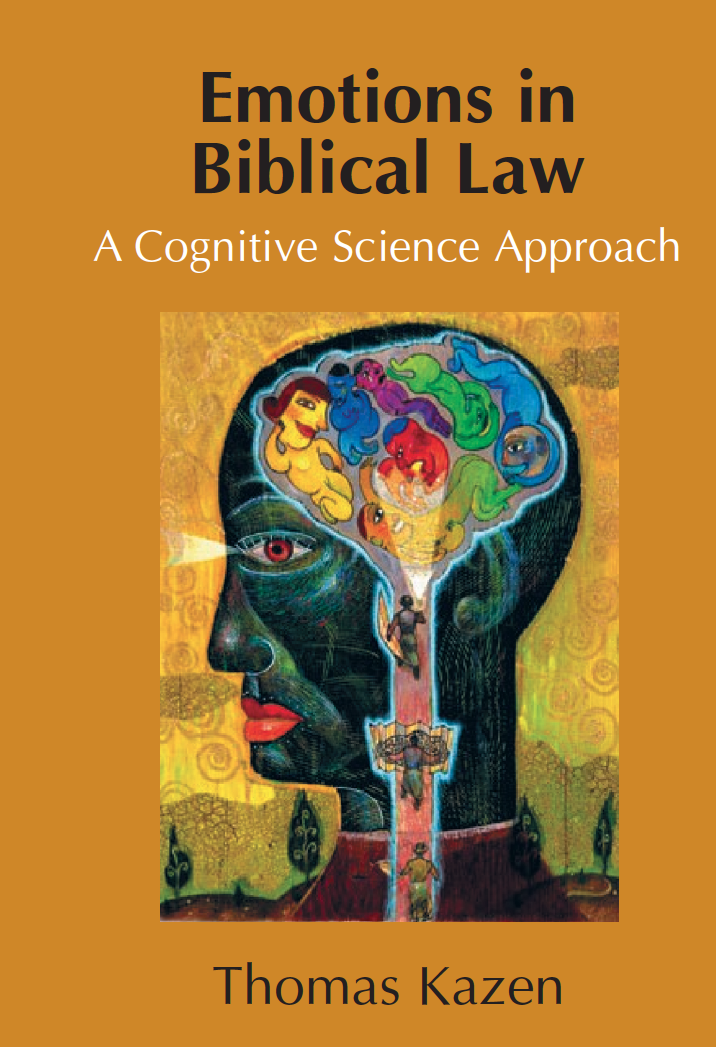
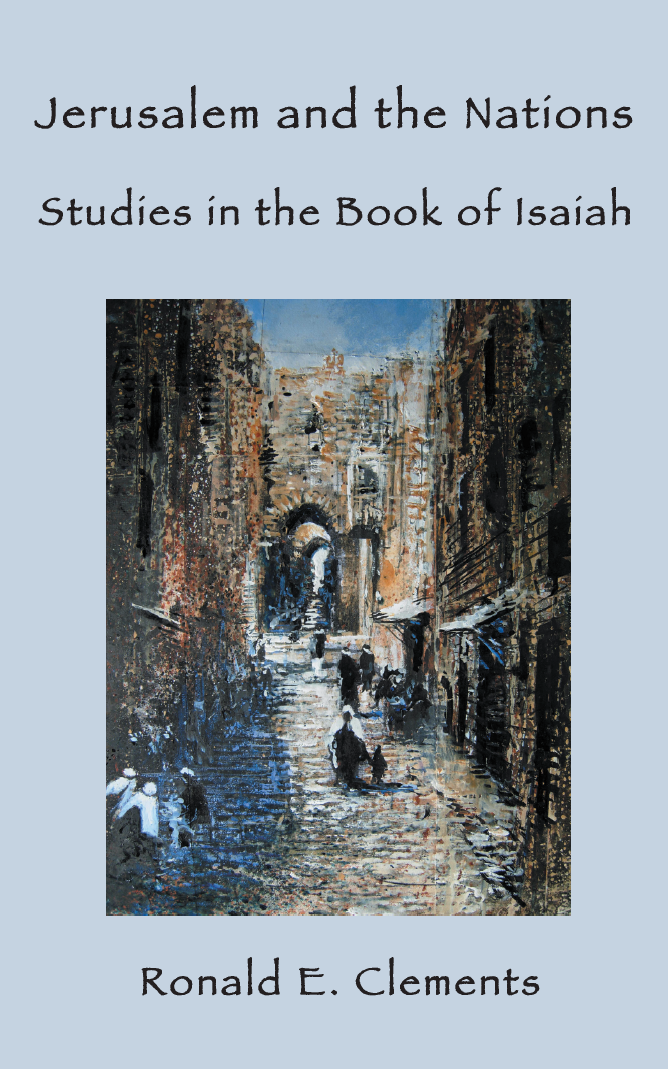
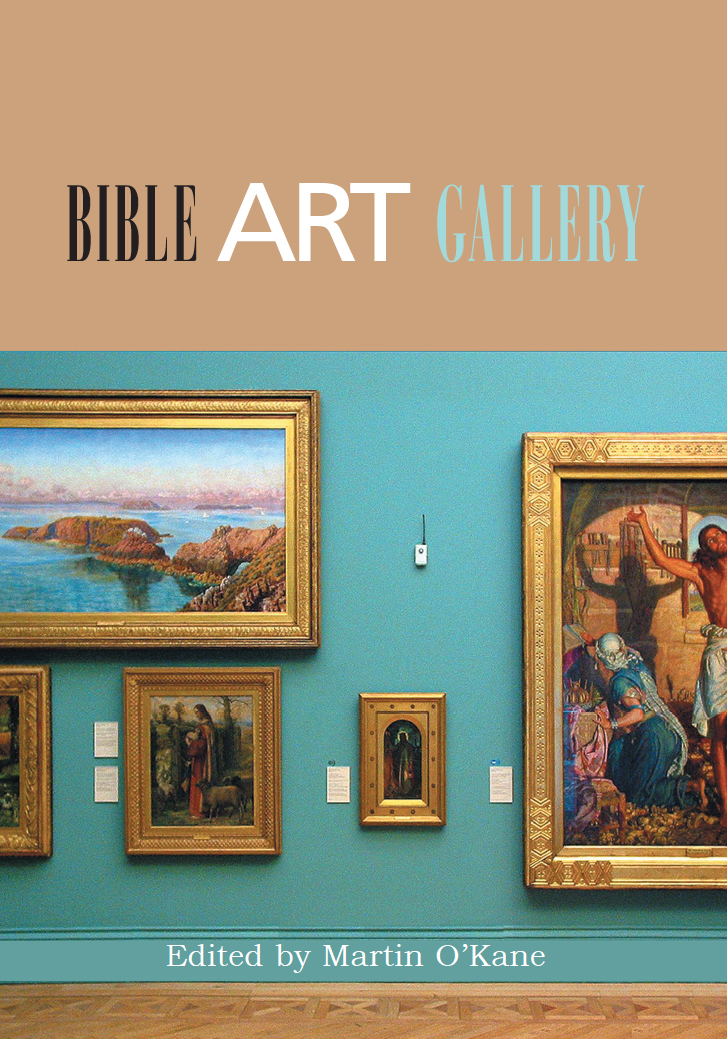

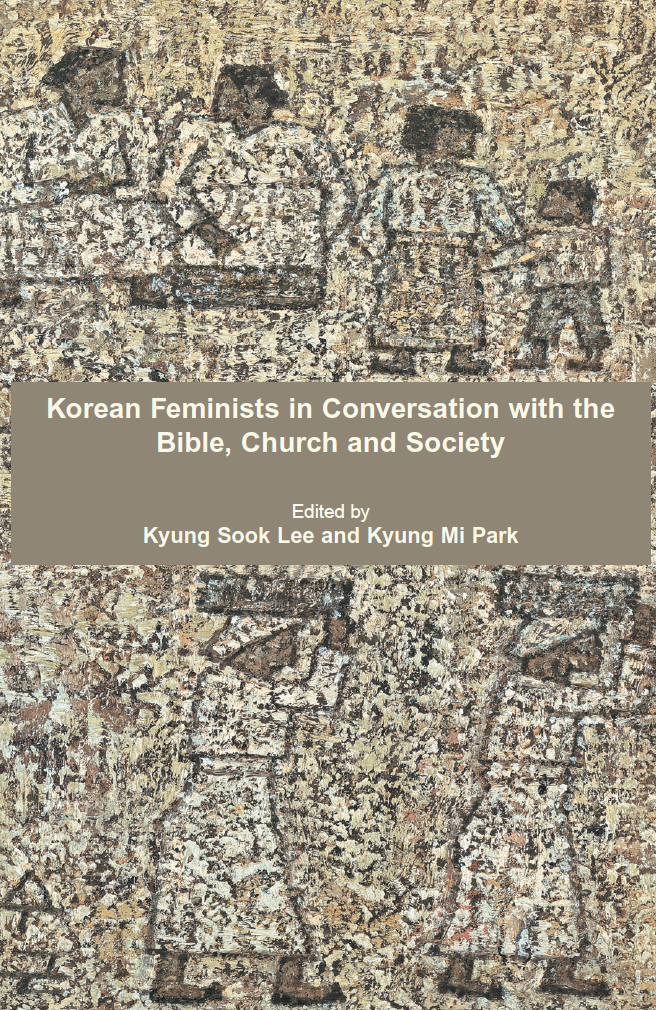

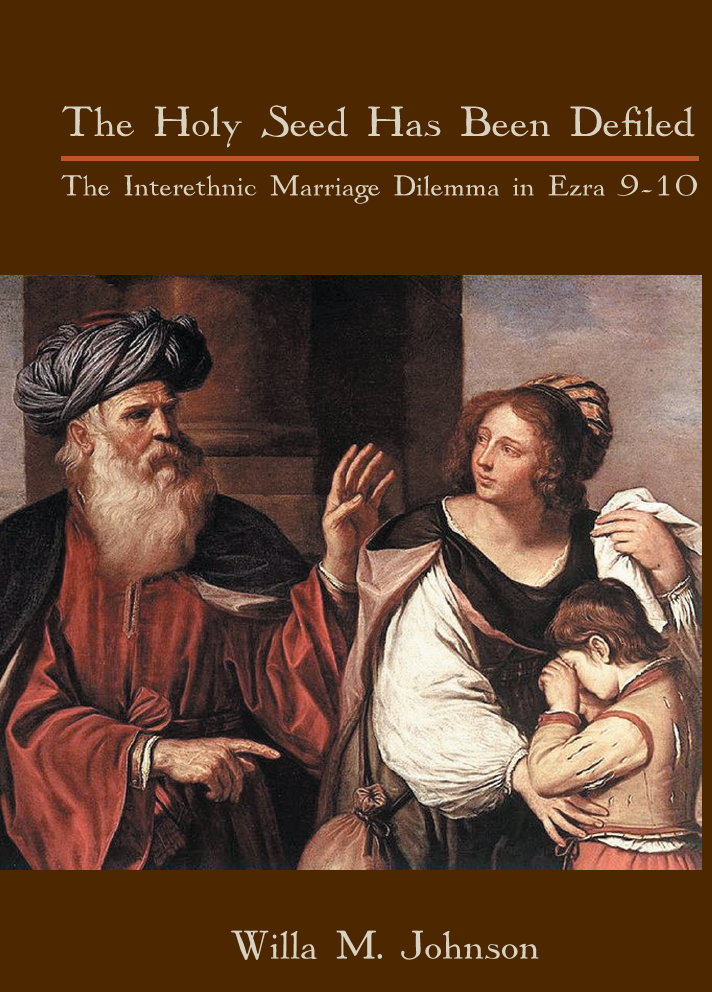
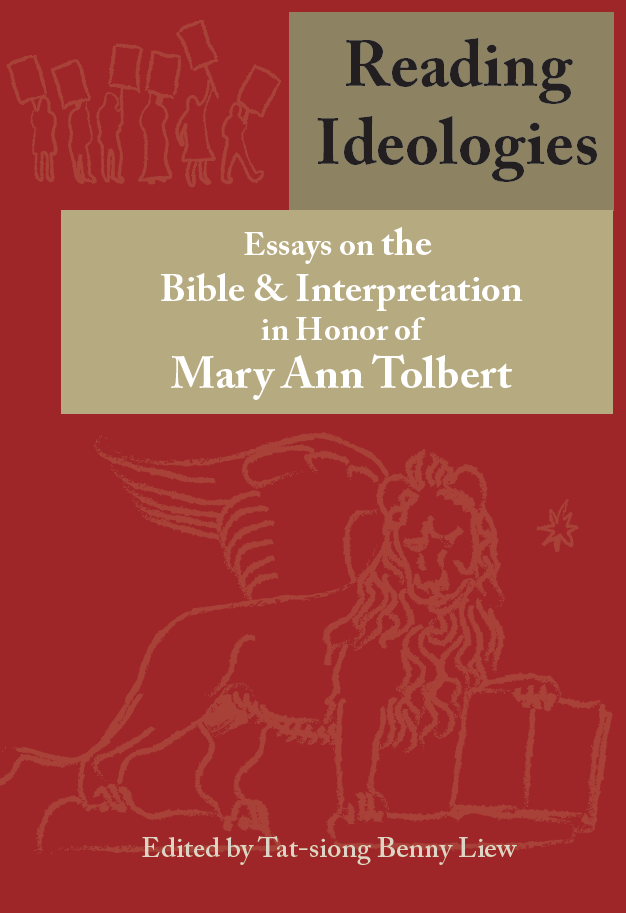
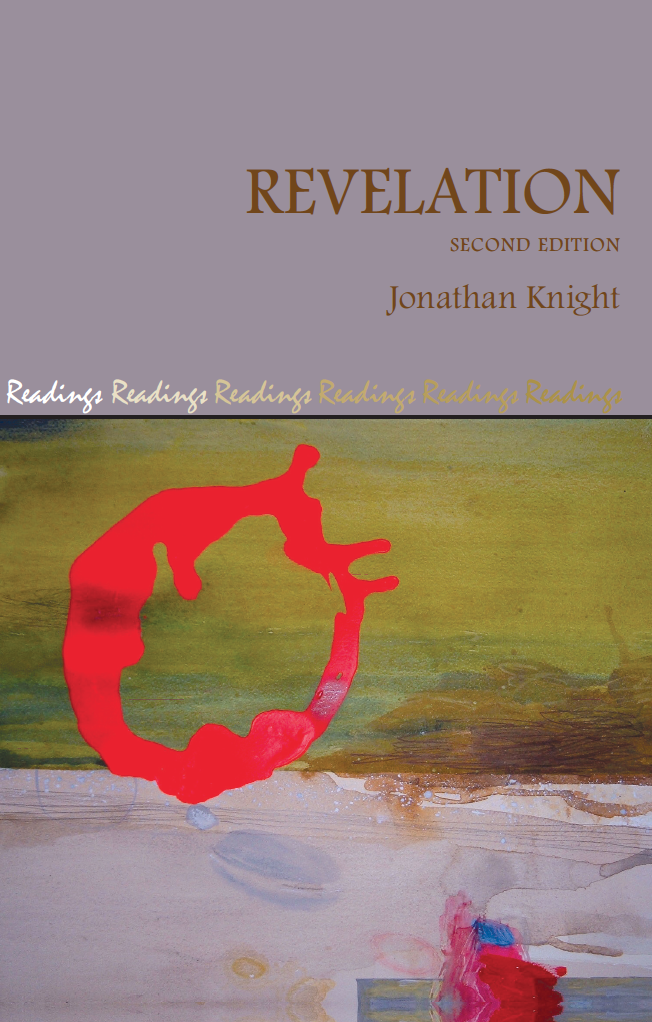
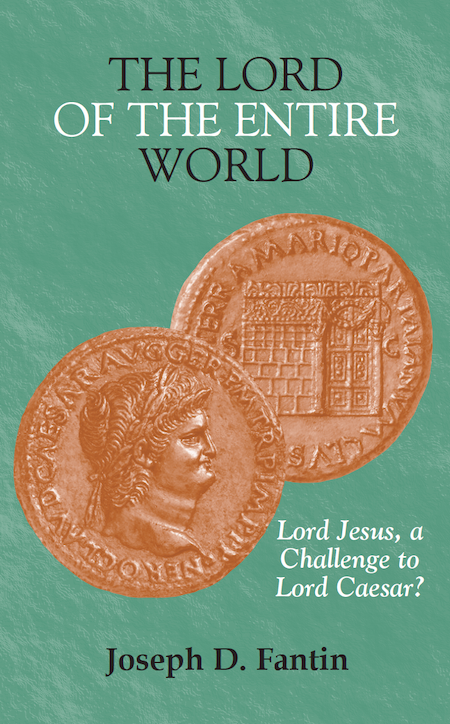
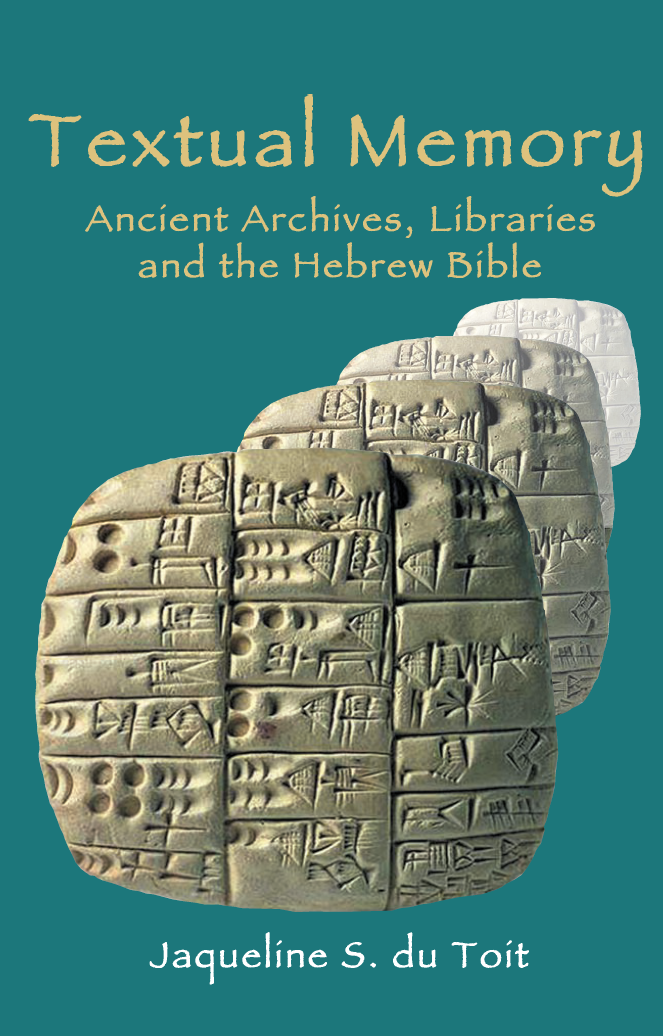
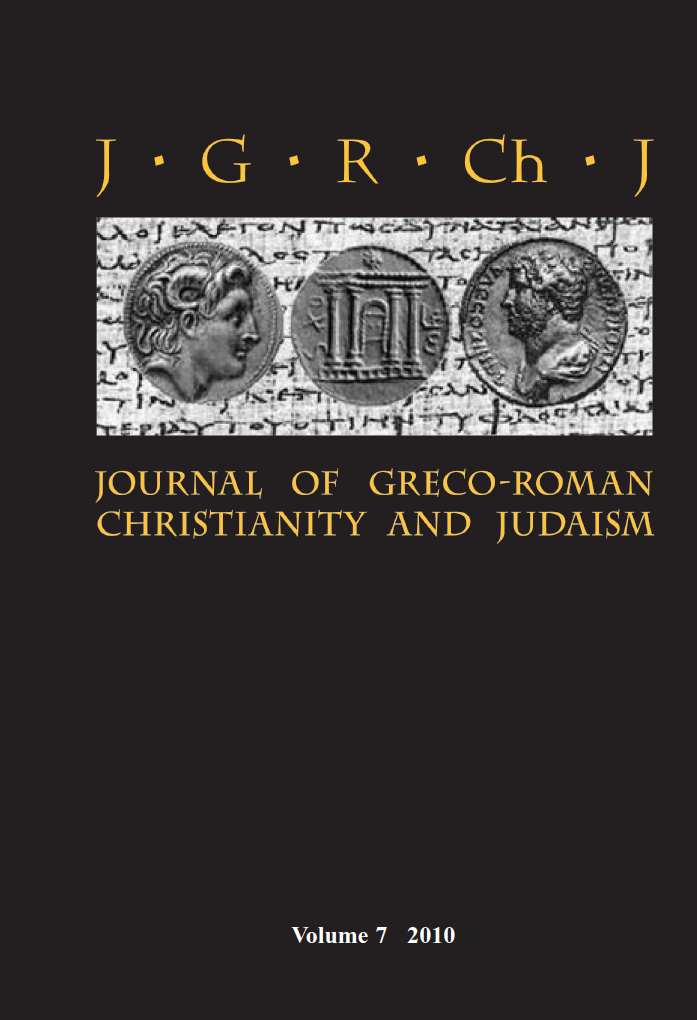
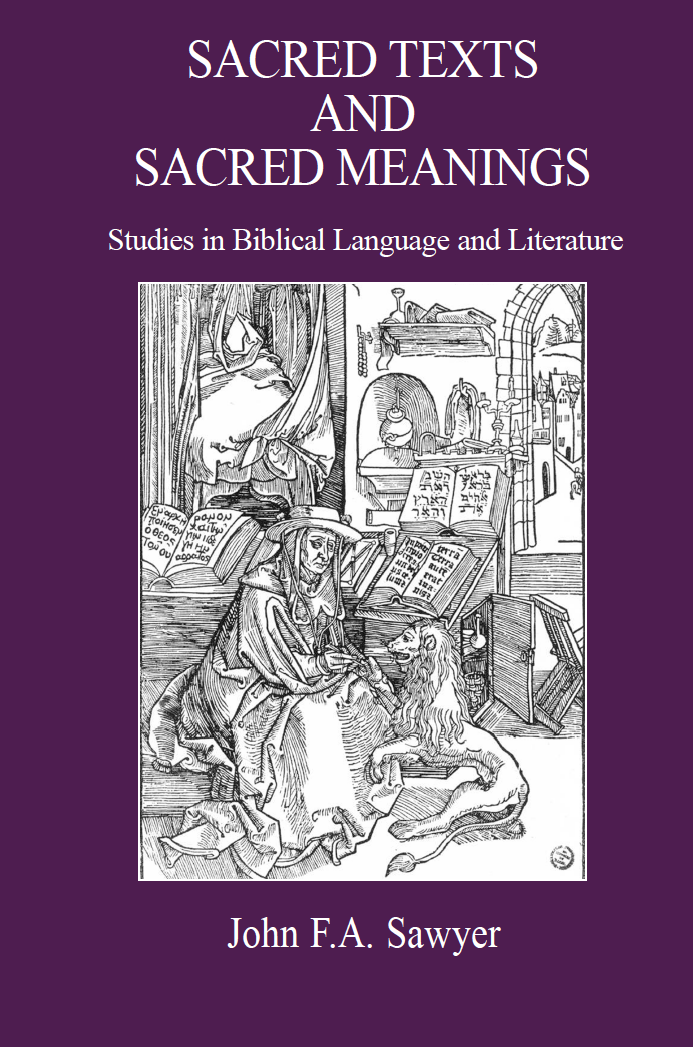
The Birth, the Curse and the Greening of Earth: An Ecological Reading of Genesis 1-11
The Birth, the Curse and the Greening of Earth: An Ecological Reading of Genesis 1-11